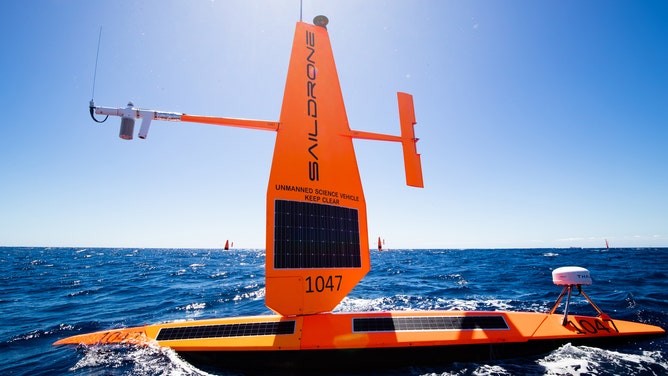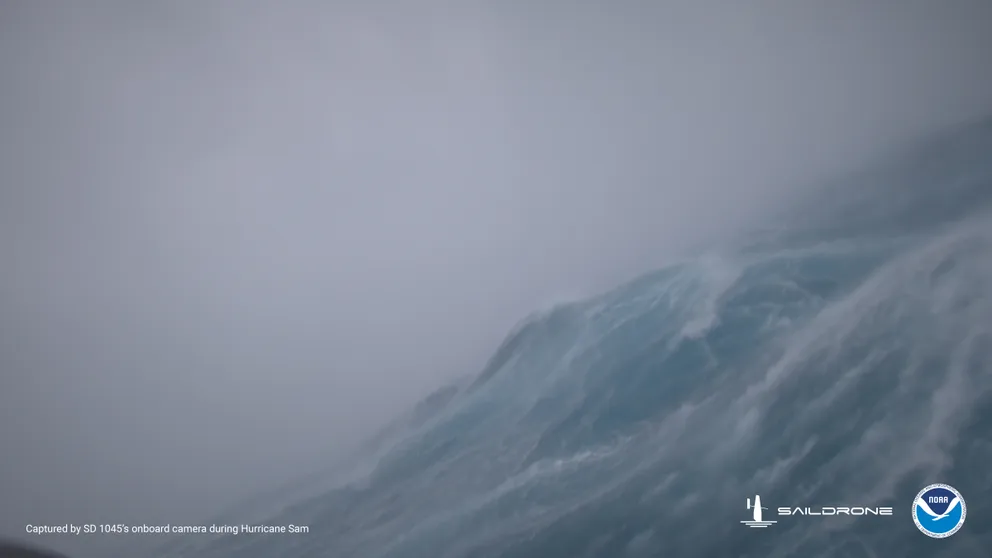Sailing drones to pinch hit for busted buoys in Gulf of Mexico during peak hurricane season
Buoys 42001 and 42003, which are stationed in the Gulf of Mexico as part of the NOAA's National Data Buoy Center, went out of service at a crucial time, just as waters are warming up ahead of the upcoming peak of hurricane season.

FILE - A saildrone sails in the Pacific Ocean
(Saildrone)
ALAMEDA, Calif. -- The loss of weather data from two critical buoys in the Gulf of Mexico is about to get a quick fix, thanks to a pair of unmanned Saildrones.
Buoys 42001 and 42003, which are stationed in the Gulf of Mexico as part of the NOAA's National Data Buoy Center, went out of service at a crucial time, just as waters are warming up ahead of the upcoming peak of hurricane season.
It will be weeks until the buoys can be repaired, so in the meantime, Saildrones will send two of their unmanned remote-controlled weather stations out to those buoy's locations to pinch hit.
SAILDRONES ADD GULF OF MEXICO TO HURRICANE HUNTING GROUNDS AFTER CAT 4 INTERCEPT IN 2021
The automated floating weather stations are wind and solar-powered, remote-controlled and built to withstand the very worst Mother Nature can churn its way. The drones can travel about 3.5 mph and can remain deployed for about a year. Last year, one Saildrone made a direct contact with the heart of Category 4 Hurricane Sam in 2021, providing the first live images from inside a hurricane eyewall at sea.
Saildrone sails into Hurricane Sam
Go inside the teeth of Hurricane Sam -- a Category 4 storm from summer, 2021, on board a Saildrone as it experiences 125 mph wind and 50 foot seas. (Video courtesy: Saildrone)
The two buoy-replacement drones have already launched and began feeding weather data on Monday. The information will be shared with climatologists and weather forecasters around the world via the Global Telecommunication System.
The data will not only help monitor atmospheric and oceanographic conditions that could generate or affect tropical systems but also play an important role in forecasting heat waves and moisture availability for thunderstorms in the region. They will join two other Saildrones already in the Gulf of Mexico whose mission is standing ready to steer in the path of any developing tropical system and get crucial storm data.
WATCH: SAILDRONE TAKES US INSIDE CATEGORY 4 HURRICANE SAM
Saildrone and NOAA hope that the drones may provide a more nimble and cheaper alternative to the expensive and lengthy processes needed to service and replace buoys, which require long manned trips to sometimes very remote ocean locations. Saildrones can be self-sustaining for a year and then sail back to port on their own for annual maintenance.
Right now, of the 1,336 buoys deployed across the globe, only about 1,000 of them are currently reporting, according to the National Data Buoy Center website.
"At times when these deep-ocean stations stop reporting, the ability to quickly send uncrewed vessels to mitigate the outage until we can service the platforms is essential," says Dr. William Burnett, director of NOAA’s National Data Buoy Center.
